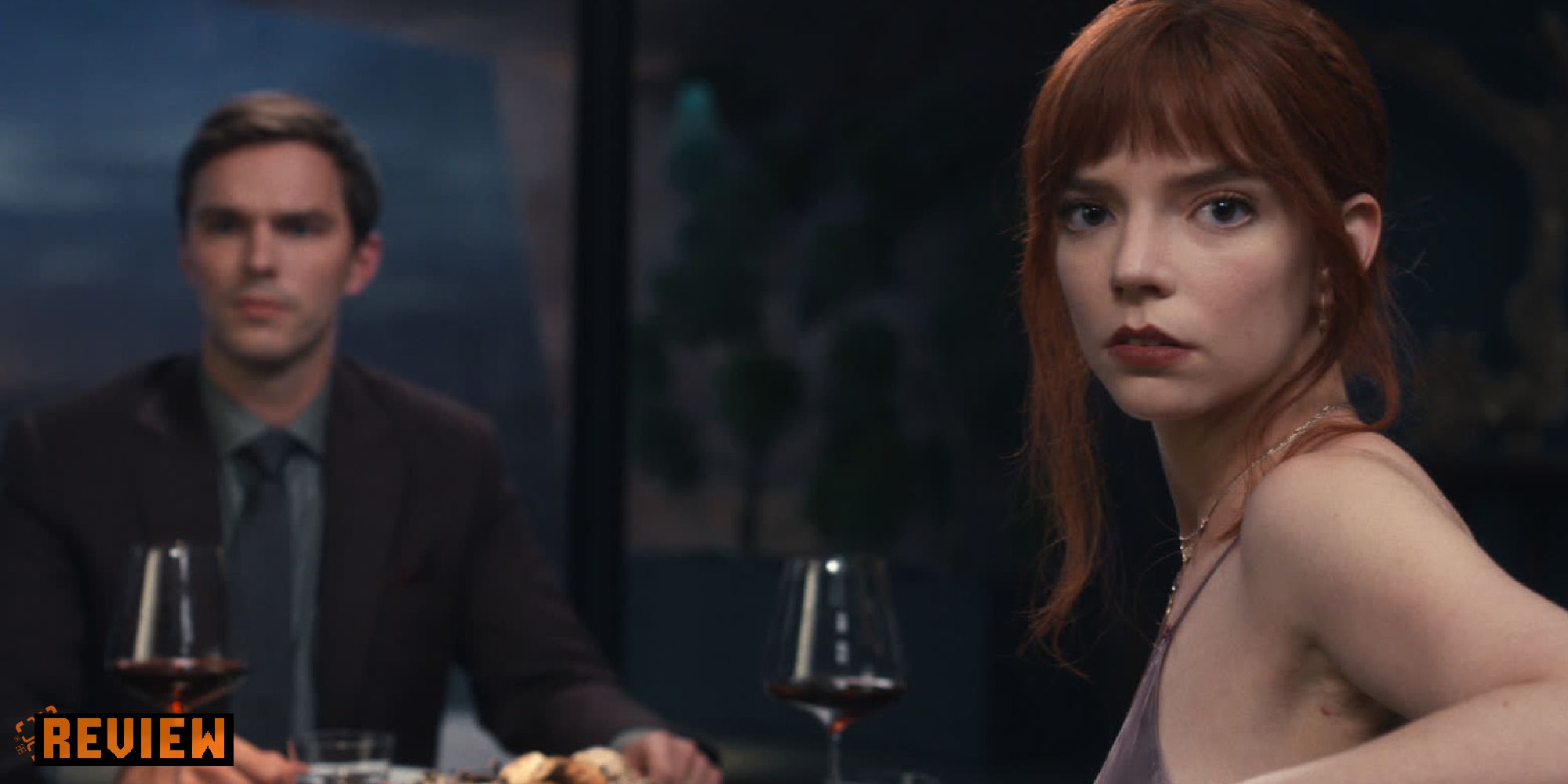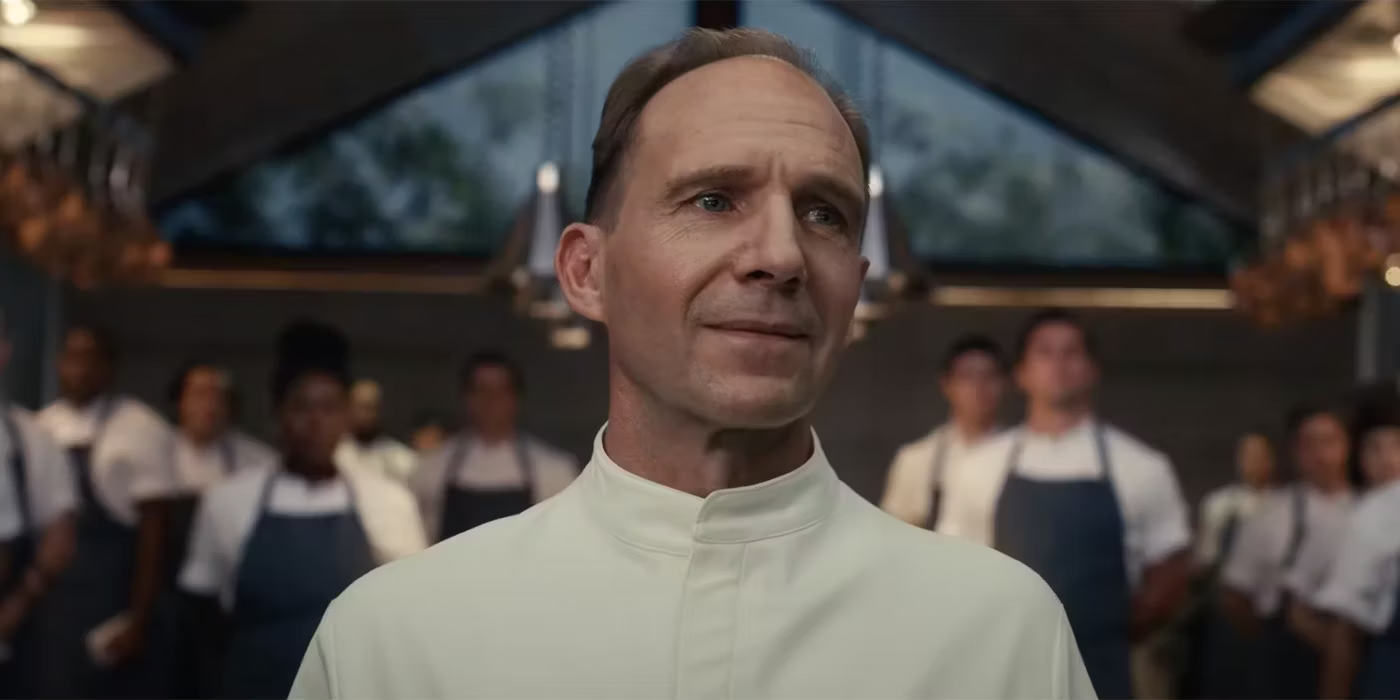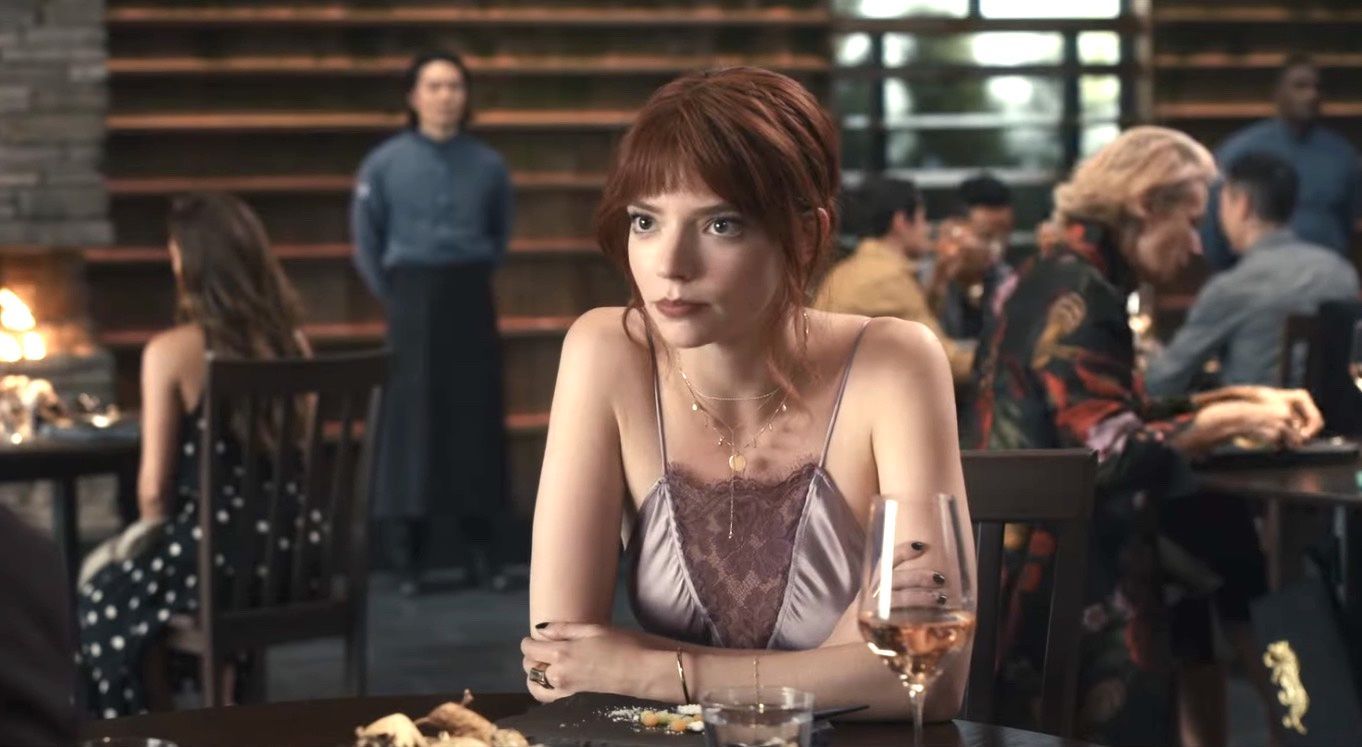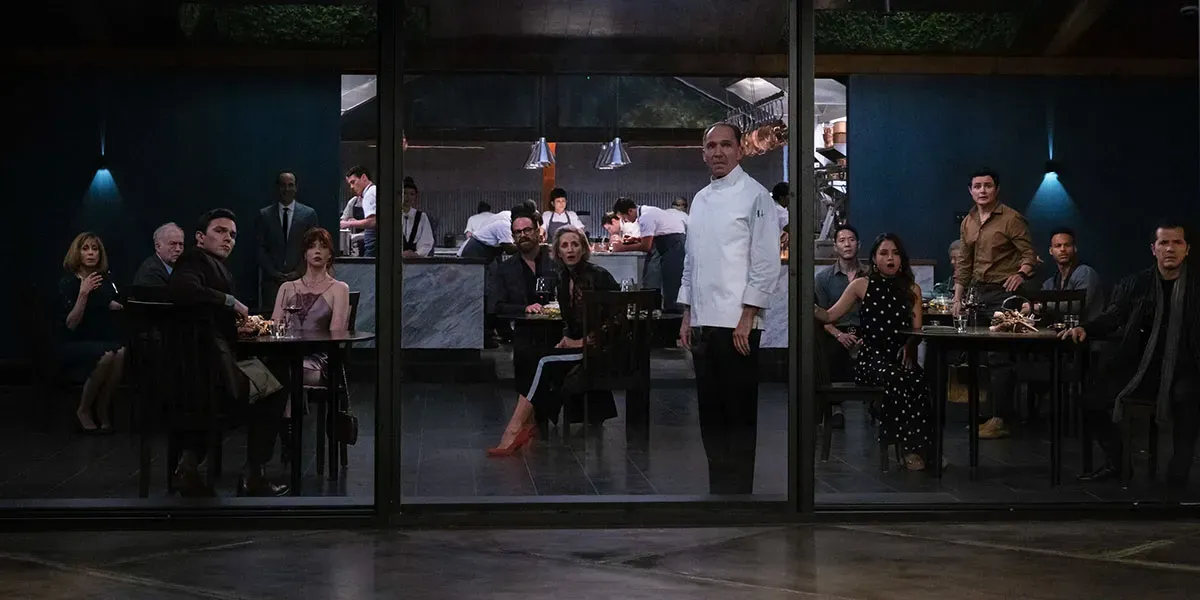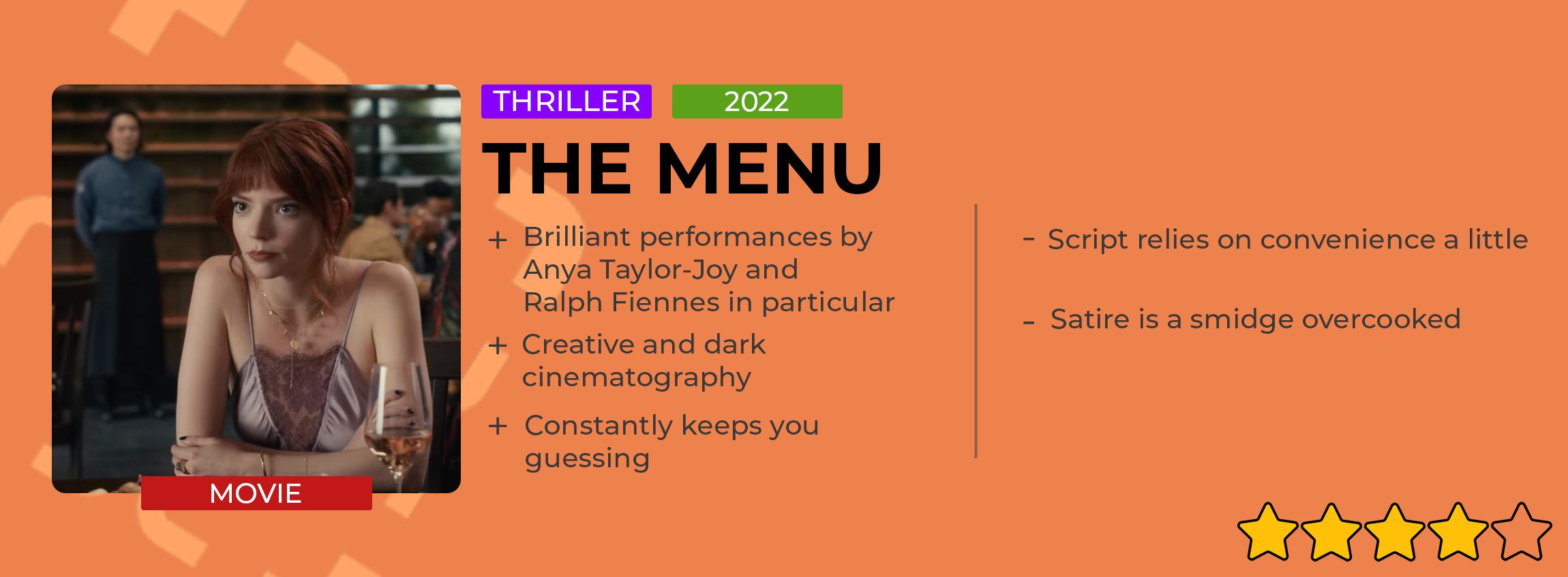Cinema has long been fascinated by food. It should come as no surprise. A good movie, like a good meal, is enjoyed by the masses and appreciated by the few. When The Menu’s central character Slowik tells his customers not to simply eat, but to taste, he may well by talking through the lens to the audience themselves, who pack screens to the rafters for CGI slugfests and avoid almost everything else. Yet The Menu is also a deconstruction of this idea, like an apple pie served as a sliver of pastry, a spoon of apple puree, and a dusting of sugar, served on a slate slab. It’s a critique of the idea that art, appreciation, enjoyment, whatever you may call a refined taste, is only for the haves, not the have nots. The Menu is undercooked in places, burnt in others, but I taste it, and it’s good.
In many ways, The Menu fails at everything it tries. As a horror it’s light on scares, as a satire it’s too on the nose, as a comedy it’s dark and laughs are sporadic, as a thriller it meanders too much, and as a character study it reduces its supporting cast down, emulsifying them to background aromas of bergamot, relying too much on the hero flavour of Ralph Fiennes and Anya Taylor-Joy. And yet, as the flawed chef at the centre of it all represents in all of this, there is joy in failure. That The Menu resists confinement, that it refuses to allow itself to be genre-ised is to its credit. It’s a savage movie, unconfined. It will lose people in all of this. An acquired taste, you might say. But it always feels true to itself, to its menu of delights and diabolical surprises. It reminded me at times of The Cook, The Thief, His Wife, And Her Lover - and not just because of the food.
It’s also an oddly romantic film. It’s sensual from the very first shot, a close-up of Taylor-Joy’s lacquered nails as she lights a cigarette, then her dark-painted lips for an intoxicating inhale. However, the romance is not that between man and woman, but man and food. For all of the drama on show, the star of this movie is not Anya Taylor-Joy, not Ralph Fiennes, not Nicholas Hoult, but food itself. It plays with conventions we know from various cookery shows, at times subverting or elevating them, and for all the dramatic and thematic justifications as to why a chef is at the heart of the movie, the true reason is the script’s admiration for the craft of food.
The chemistry between Hoult’s Tyler and Taylor-Joy’s Margot is far more interesting than merely romantic. We have seen plenty of movies where the couple loves each other, or resents each other, or one loves one and the other resents the other. Here things are far more complex and spiky. There are layers to the animosity and affection. The movie is peppered with good performances but while other characters are taken to extremes or tropes a little jarringly, the twisted triangle of Tyler, Margot, and chef Slowik is always human, intimate, and raw.
The Menu asks you to think in an odd way. It is not a movie to turn one’s brain off and enjoy the ride. Though the plot is not a Lynchian labyrinth, the entire point of the project is that we should learn to savour things more. And yet like most horror-adjacent movies, you can prod at it in places and find the edges charred, the sauce split, the seasoning too weak. There are times when characters could do more, could push a little harder. Yes, attempts are thwarted and these characters are ineffectual by nature, but it feels convenient at times. The script references this later as if to justify it, but I’m not sure that carries. The fact is characters sometimes do things entirely because the script needs them to, and that is a vegetable some people just won’t swallow.
Am I too willing to be hoodwinked when I say that might be part of the charm? Am I, like Tyler, too obsessed with the minutiae of the craft and the intellectual need to have understood it all to admit that this steak is medium when I asked for medium rare? The Menu mocks us, along with its characters, deliciously at times, and if you are watching for the subtext and the performances with a willingness to just go for it, The Menu will leave you satiated. Others may find themselves still hungry and irritated, yearning for the simplicity of a nice, traditional, well-cooked cheeseburger when the credits roll.
With so much of The Menu taking place in the same dining room, it often feels more theatrical than cinematic. Some of the characters are a little thin in places, but then they aren’t so much characters as representations of larger ideas, and that would be lost if, like Margot, they were all given greater screentime and complexities. A dish needs its dressing. The strongest performances belong to Taylor-Joy and Fiennes, both growing in surprising ways as the movie goes on. Taylor-Joy is mysterious, removing layers and finding nuance as the script goes on. She’s scared yet steely, intelligent yet naive. Though not a traditional Final Girl here, she pulls out all the stops of her experience and carries the movie past any lingering thoughts I had that X character simply should have done Y and we might all have been able to go home.
Fiennes is different. Though his character has an aura of mystery, he is the picture of a high-class chef from his very first appearance. There is no mystery to his mysteriousness. The challenge that Fiennes overcomes, then, is in developing the character away from the mystery, into grounded banality, and as a result becoming far more compelling. Though occasionally overshadowed by Taylor-Joy, with whom he is almost always on screen with, Hoult has perhaps the most interesting role. He shrinks out of his position as protagonist as the minutes roll by, like butter melting in a pan to saute. As his screentime and focus dwindles, Hoult (typically best as a supporting man throughout his career) has more fun with his character. He’s far better at stealing the spotlight when it’s not his than dealing with it when it is.
Of the rest of the players, Hong Chau, John Leguizamo, and Judith Light are the picks of the bunch, while Janet McTeer and Arturo Castro are asked to carry the film when the pacing slows and both do an able job of humanising their characters with little to work with. Still, above all of these, the star is the food, and director Mark Mylod draws the best from every seductive, succulent shot. One particular shot, right at the film’s climax, is perhaps the best composed shot all year. Because of the movie’s similarity to theatre, many of the shots, at least those not centring food, are perfunctory. When Mylod gets the chance to let loose with his framing, whether it be this overhead shot towards the end or the opening focus on Margot’s cigarette, it does make you wish that perhaps we might have had more of that for our main course, not just an amuse bouche and final mignardise.
Throughout The Menu, chef Slowik reminds his guests that they won’t appreciate the food until they have tried it all. The film itself is similar. There are parts you can pull apart and leave to the side of your plate, but together, cohesively, it all works. A reliance on convenience will hamper the script for some, and the satire’s not as cutting one might hope, but propelled by strong performances, a relentlessly dark sense of humour, and an unsettlingly unique intensity, The Menu is a triumph of flavour and presentation.
Score: 4/5. TheGamer was invited to a screening for this review. The Menu is in cinemas November 18.

